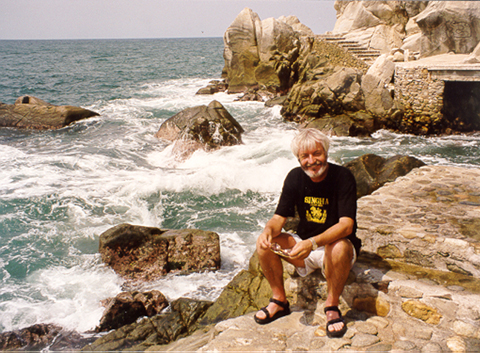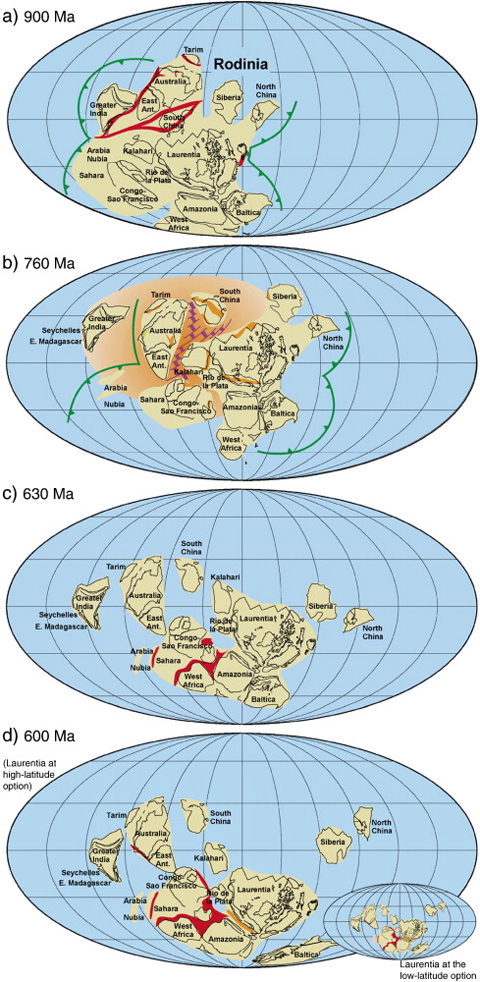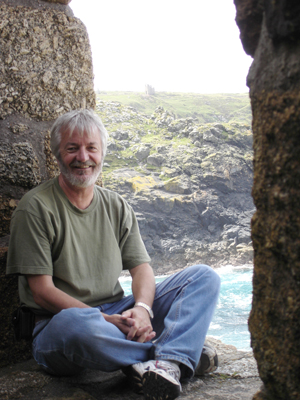 Gondwana. Rodinia. Nuna. Kenorland. Vaalbara. They sound like other worlds. They likely represent the past of this world.
Gondwana. Rodinia. Nuna. Kenorland. Vaalbara. They sound like other worlds. They likely represent the past of this world.
The introduction of plate tectonics 45 years ago was one of the scientific revelations of the 20th century.
German meteorologist Alfred Wegener is given credit for hypothesizing in 1912 that today’s continents were once one giant supercontinent, and now schoolchildren are shown how the continents fit back together like a jigsaw puzzle. But that’s not the whole picture.
In 1982, Ohio University geologists Drs. R. Damian Nance and Thomas R. Worsley (now retired) proposed that Wegener’s supercontinent was just one in a series of supercontinents on a planet that has been making and remaking itself for billions of years. Although their idea, known as the “supercontinent cycle” would take years to germinate, the 21st century has seen it go viral. (Contact Dr. Nance at nance@ohio.edu or 740-593-1107.)
There was controversy along the way. But no more.
In the early 1980s, the notion that numerous supercontinents had formed and broken up “with profound consequences to the course of Earth history was a radical one,” says Nance, Distinguished Professor of Geological Sciences at Ohio University.
“The recognition that Earth history has been punctuated by supercontinents, the assembly and breakup of which have profoundly influenced the evolution of the geosphere, hydrosphere, atmosphere and biosphere, is arguably the most important development in Earth Science since the advent of plate tectonics,” writes Nance in “The supercontinent cycle: A retrospective essay,” with co-authors from China and Canada. The authors trace the history of the supercontinent cycle from its controversial introduction in the early 1980s, through its increasing application in the 1990s, to its widespread acceptance in the first decade of the 21st century.

► Earth history has been punctuated by the assembly and breakup of supercontinents. ► The influence of the supercontinent cycle on Earth’s geologic record is profound. ► Recognition of the cycle is a major milestone in the development of Earth Science.
Assembly and Breakup
From a variety of perspectives, researchers in the mid-1900s were building evidence of tectonic processes. They looked at folds and craters in the Earth’s crust. They looked at the geologic record of intermittent granite formation as magma rose and cooled. They looked at fossil evidence of land going from sea to dry land to sea. They used radiometric age dating. And in various ways, they theorized that the Earth had a tumultuous past.
The introduction of plate tectonics brought recognition of the process of ocean closure by subduction and provided an explanation for large structural deformation of the Earth’s crust, as well as crustal growth. It helped explained how different ores formed over time and space. It helped explain how species evolved. It helped explain how granite formed.
“That this long-recognized history of episodicity in tectonic processes was the manifestation of a long-term cycle of supercontinent assembly and breakup was conceived and developed right here at Ohio University,” Nance says. Nance and his colleagues argued that the existence of a supercontinent cycle would show up as episodic peaks in mountain building (supercontinent assembly) and continental rifting (supercontinent breakup). They predicted four, then five supercontinents prior to the one now known by schoolchildren.
“Among the events that would accompany the cycle we argued that, during the lifespan of a supercontinent, tectonic activity would be dominated by uplift as trapped mantle heat accumulated beneath the largely stationary supercontinent, ultimately manifesting as hotspot activity contributory to fragmentation,” writes Nance. In addition to geologic changes, “massive extinctions would be expected to accompany the loss of shallow marine habitat, and cold climates should develop (potentially leading to continental glaciation) as CO2 is removed from the atmosphere by the weathering of large areas of subaerially exposed continental crust.”
Nance and his colleagues also argued that during supercontinent fragmentation, the “younging of the world ocean floor through rifting and the opening of new (interior) ocean basins, coupled with subsidence of the dispersing continental fragments, should raise sea level to a maximum elevation.” Rapid biotic diversification should follow, with warm, equable climates developing as continental drowning allows atmospheric CO2 levels to build.
“According to their model, the world ocean floor is oldest at maximum continental dispersal (today’s world), at which time they contended that sea level would be low once again and emergent polar continents could be glaciated. Finally, during supercontinent assembly, they argued that collisional orogenesis should increase to a maximum, global sea level should first rise and then fall as subduction consumes first the old and then the young floor of the interior oceans, and atmospheric CO2 levels should decline and cause global climates to deteriorate. Although data in support of these proposed influences were limited at the time, many have since been borne out by subsequent analyses of the contemporary database on secular trends in the geologic record,” he writes.

Sequence of reconstructions from Li et al. (2008) showing how the breakup of Rodinia may have led to the assembly of Gondwana and Pannotia. (a) Rodinia at 900 Ma, (b) breakup of Rodinia at 760 Ma coincides with onset of widespread subduction in the peri-Rodinian (Mirovoi) ocean, (c) assembly of continents to form Pannotia (Gondwana + Laurentia) at 630 Ma, and (d) onset of subduction along margins of Gondwana at 600 Ma following amalgamation of Pannotia.
Still More Questions
But all is not solved in the modeling of heating and cooling, oceans closing and continents forming. Did the thermal insulating effect of the continent, the cooling effect on ocean buoyancy…did it all add up? Was it the new (interior) oceans formed during supercontinent breakup that closed to form the next supercontinent, or was it the exterior ocean that surrounded each supercontinent following its assembly?
“This question highlights a fundamental uncertainty in our understanding of the process of supercontinent amalgamation that has yet to be resolved,” writes Nance, who in 2003 helped introduce the terms “extroversion” (closure of the exterior ocean) and “introversion” (closure of the interior oceans) to refer to the two end-member paths by which supercontinents might assemble. He suggested that both may have been involved in the assembly of past supercontinents.
“By the end of the 1980s, the role of past supercontinents in Earth history was beginning to receive increased attention, and this interest would only heighten in the decade to follow,” he writes.
“The first decade of the 21st century witnessed a surge of interest in studies related to the origin, evolution and dispersal of supercontinents through Earth history. Advancements in analytical techniques and concepts in a number of fields including detrital zircon geochronology and Hf-isotopes, new data and refinements in paleomagnetism, and new approaches in geophysical techniques such as mantle tomography and numerical modeling, paved the way for innovative proposals and global models on supercontinents. The decade also saw new lines of thinking with regard to the relationship between supercontinent history and solid Earth tectonics, metallogeny, surface environment and life,” Nance says.
Read more in “The supercontinent cycle: A retrospective essay.”
- nance@ohio.edu
- Web site
- 308 Clippinger Laboratories
- 740-593-1107



















One Comment